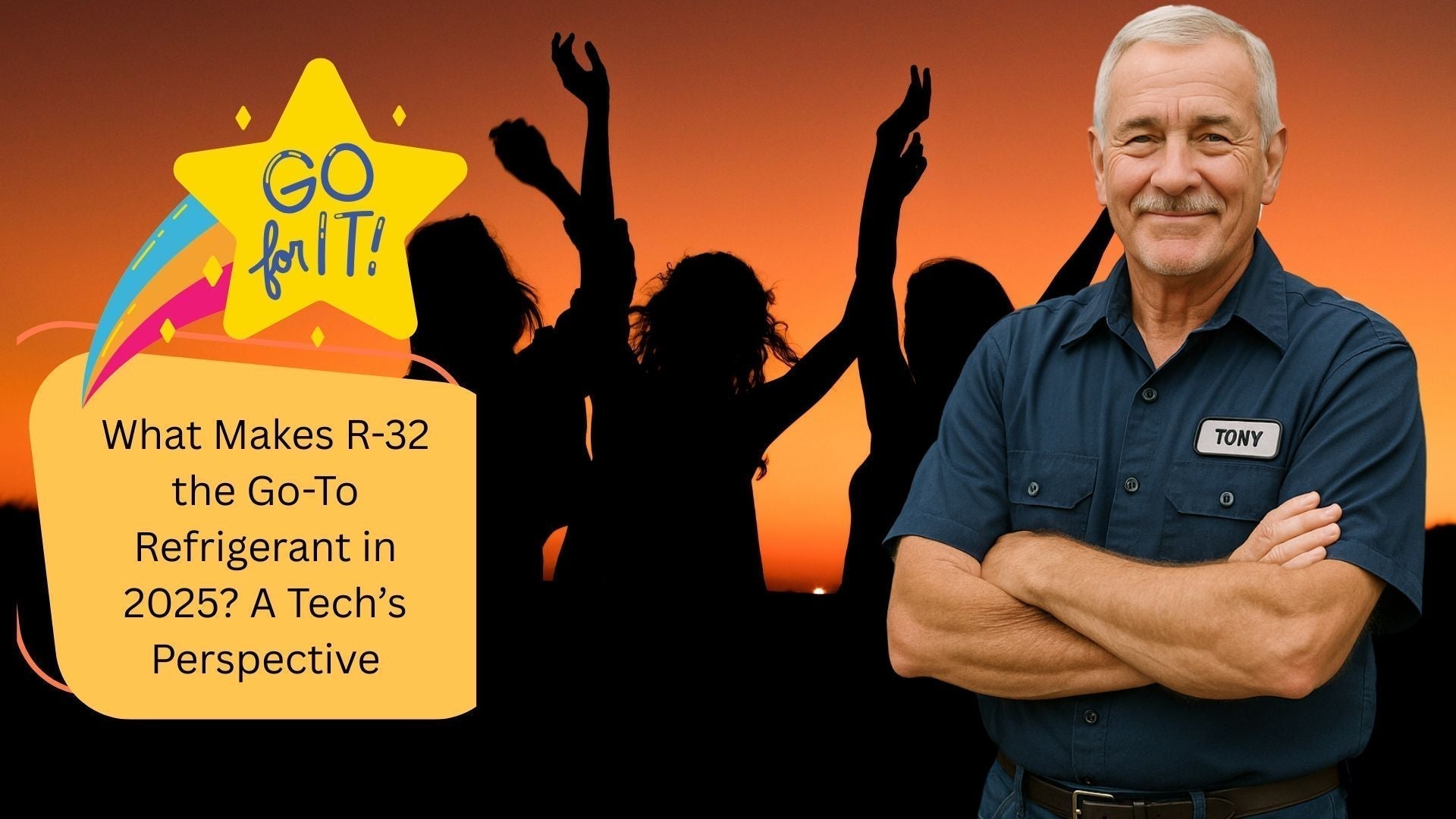Let’s Talk About R-32—No Fluff, Just Facts
I’ve worked on everything from ancient chillers to the latest inverter systems. When a new refrigerant hits the market, I don’t jump on the bandwagon. I wait, I test, and I see how it holds up in the field. And let me tell you—R-32 refrigerant has earned its stripes.
So what makes it stand out in 2025? Three words: efficient, safe, sustainable. Let’s unpack that.
Efficiency Where It Counts
R-32 systems run smoother and cooler than their R-410A counterparts. Why? It all comes down to thermodynamic performance. R-32 has a higher cooling capacity per pound of refrigerant, which means your system doesn’t have to work as hard to hit the target temperature.
This translates to lower energy bills and fewer compressor failures—music to any contractor’s ears. According to Daikin’s analysis of refrigerants, R-32 outperforms R-410A by about 10% in energy efficiency in optimized systems. That’s not marketing talk—that’s field data backed by the folks who’ve pioneered HVAC tech for decades.
👉 Source: Daikin on R-32 Refrigerant Advantages
Why Contractors Are Dropping R-410A Like a Bad Habit
R-410A had its moment, but it’s on its way out. It’s a high-GWP (Global Warming Potential) refrigerant, and the EPA’s phasedown mandates are tightening fast. By 2025, manufacturers and pros are turning toward low-GWP refrigerants like R-32 because they meet new environmental regulations without sacrificing performance.
Want the straight scoop on refrigerant regulations? The U.S. Environmental Protection Agency (EPA) has a dedicated section on the HFC phasedown and why next-gen refrigerants like R-32 are leading the charge.
👉 Source: EPA's AIM Act: HFC Phasedown and Refrigerant Transition
Yes, It’s an A2L. No, It’s Not a Fire Hazard.
I’ve heard the A2L label scare off plenty of customers. Here’s the deal: R-32 is classified as “mildly flammable”, but in practical HVAC use, it’s safer than most people think.
Modern systems are designed with leak detection, proper ventilation, and protective controls. If you're installing it per code—and you should be—it’s safer than an overloaded R-410A unit with leaky joints.
If you want to dig into the science, ASHRAE’s safety classification and UL’s A2L guidance are both solid reads.
👉 Source: ASHRAE Safety Standards for Low-GWP Refrigerants
The Green Factor: Why R-32 Is Better for the Planet
R-32’s GWP is only 675, compared to R-410A’s whopping 2,088. That’s a big drop—almost 70%. So every R-32 install cuts your environmental impact without overhauling your entire system.
In fact, the Intergovernmental Panel on Climate Change (IPCC) highlights R-32 as a viable path toward carbon reduction in HVAC and appliance industries.
👉 Source: IPCC Refrigerants & Global Warming Potential Report
Real Talk from the Field
I’ve installed dozens of R-32 systems over the past two years. You want my no-BS verdict? They run cooler, need fewer callbacks, and are easier to charge and troubleshoot. Less pressure than R-410A, tighter diagnostics, and better efficiency under partial load.
And when you pair these with a matched R-32 air handler, the whole system just sings.
Final Thoughts: Should You Go with R-32?
If you’re replacing an old system or planning a new install, I’d bet my lunch money on R-32. It’s not just regulatory-safe—it’s future-proof, efficient, and easier on your wallet in the long run.
Sure, it’s not a plug-and-play replacement for R-410A—you’ll want new compatible equipment—but with all the advantages, it’s a smart investment.
Tony’s Takeaway:
-
✔️ 10% more efficient than R-410A when optimized
-
✔️ 675 GWP (70% less than R-410A)
-
✔️ Lower charge volume needed
-
✔️ Mildly flammable but safe with proper install
-
✔️ Backed by EPA and global standards
If you’re a contractor, landlord, or savvy homeowner ready to upgrade, R-32 should be at the top of your list. Don’t wait until the refrigerant squeeze leaves you stuck with outdated gear.







